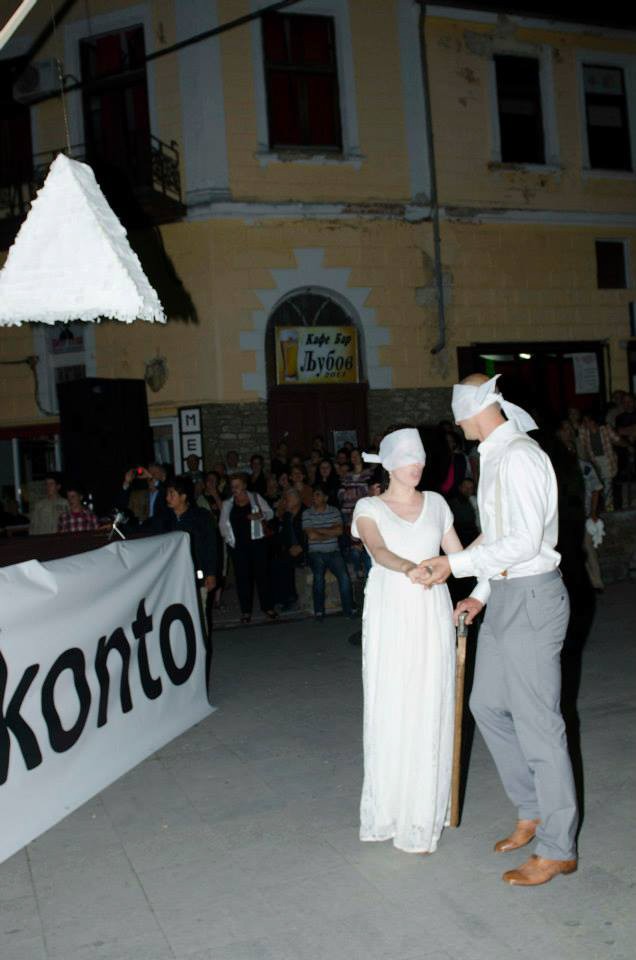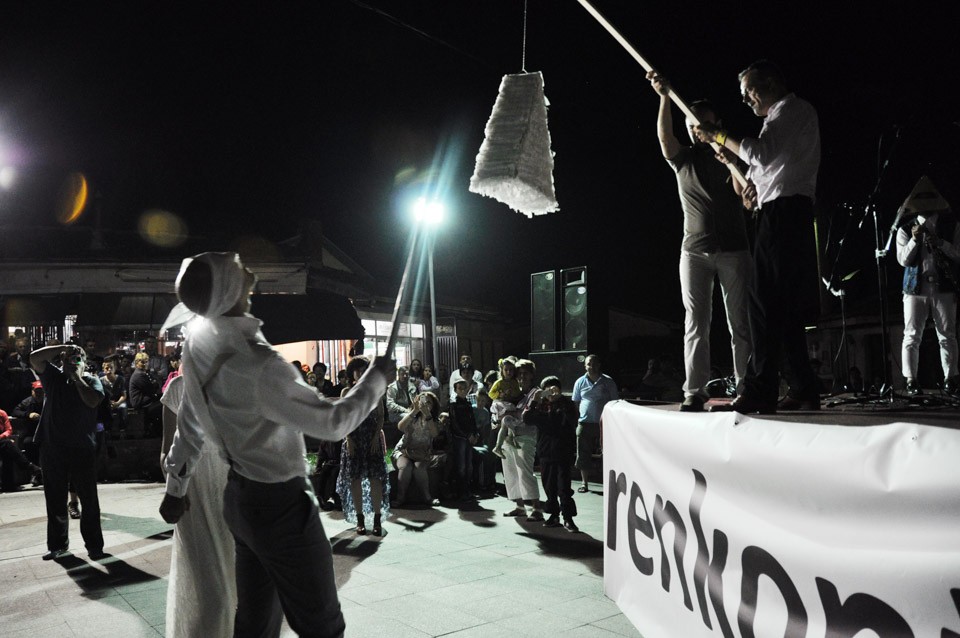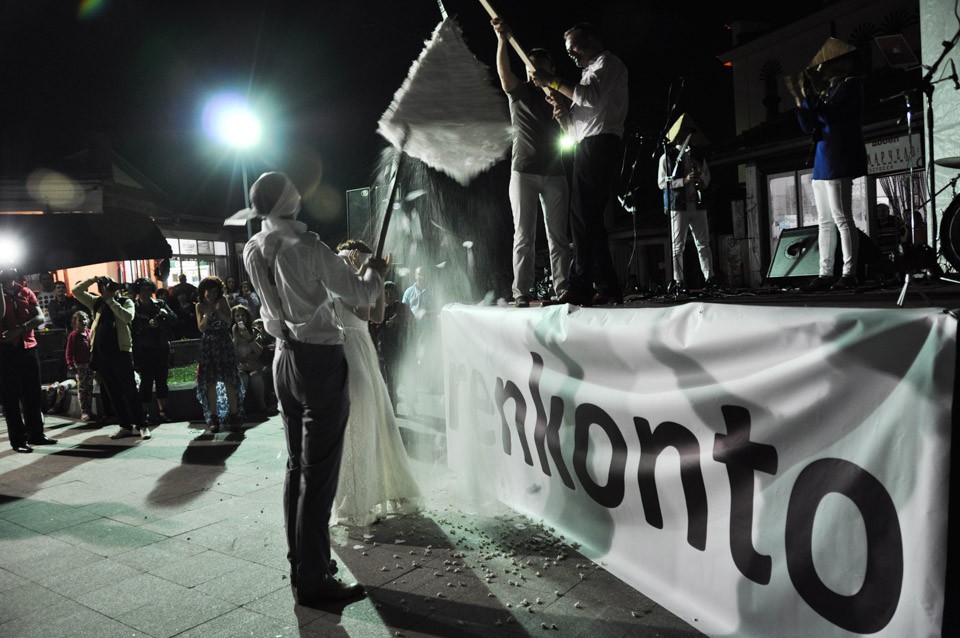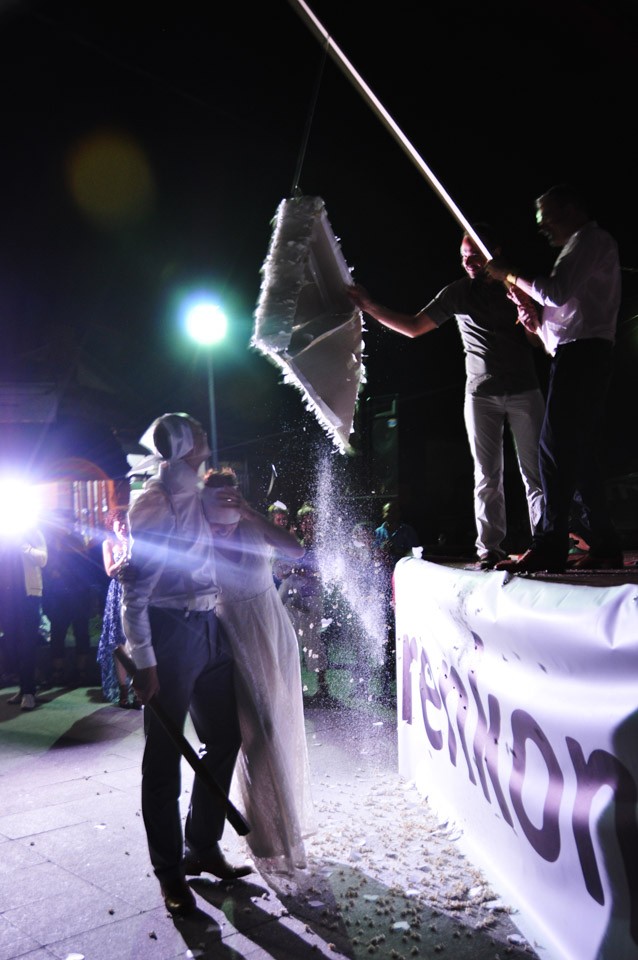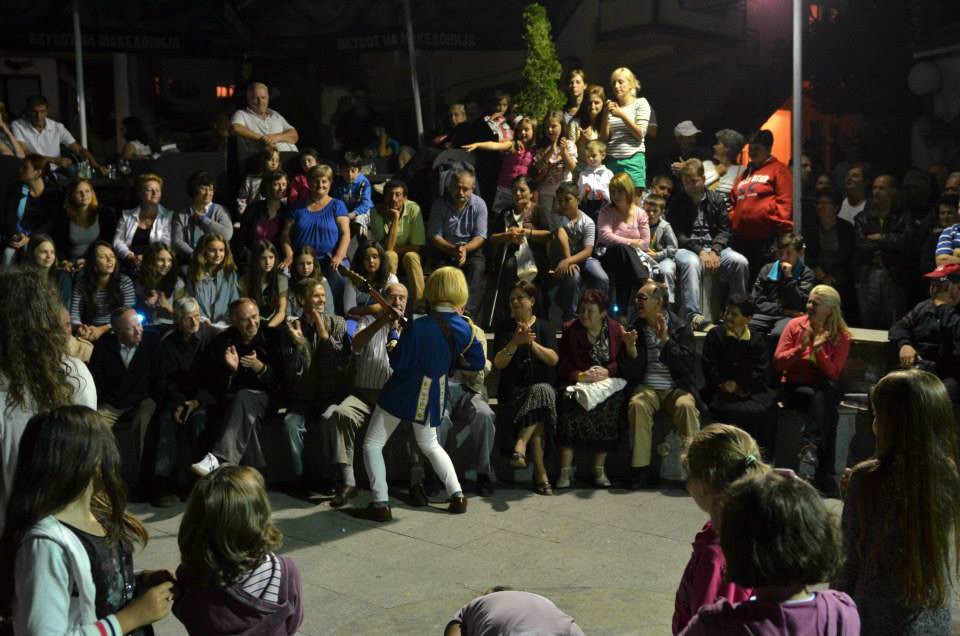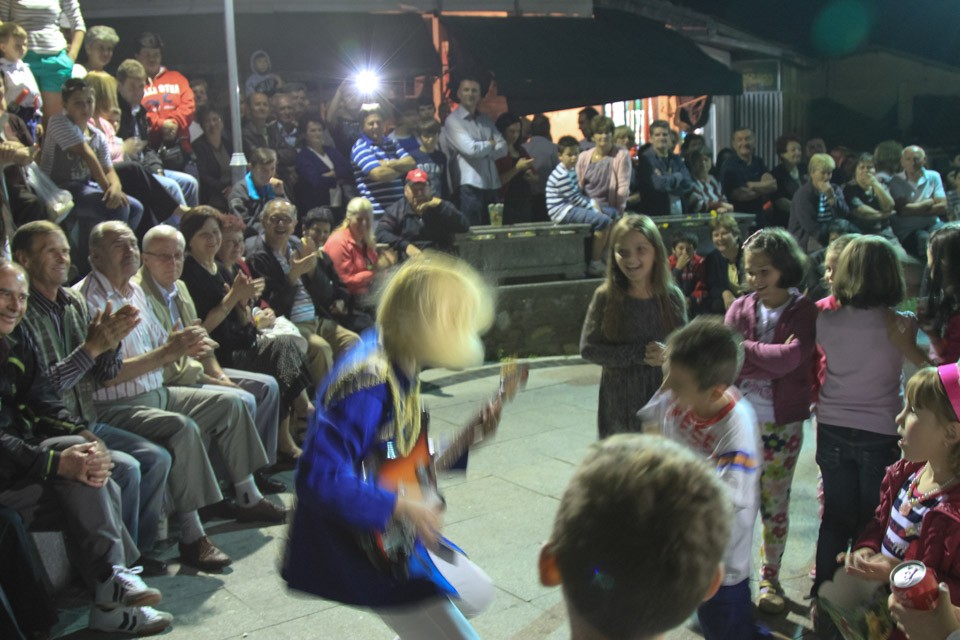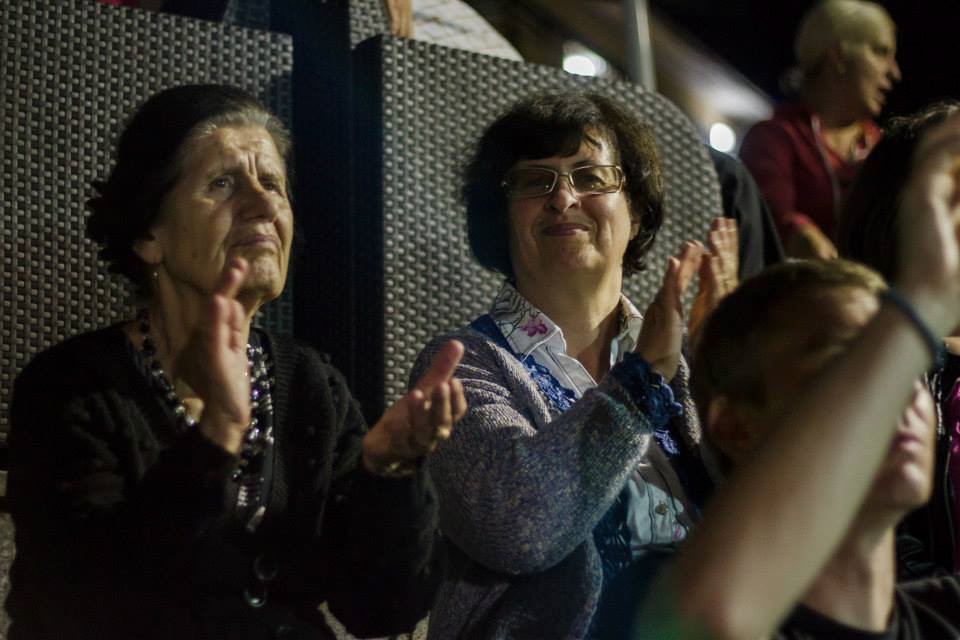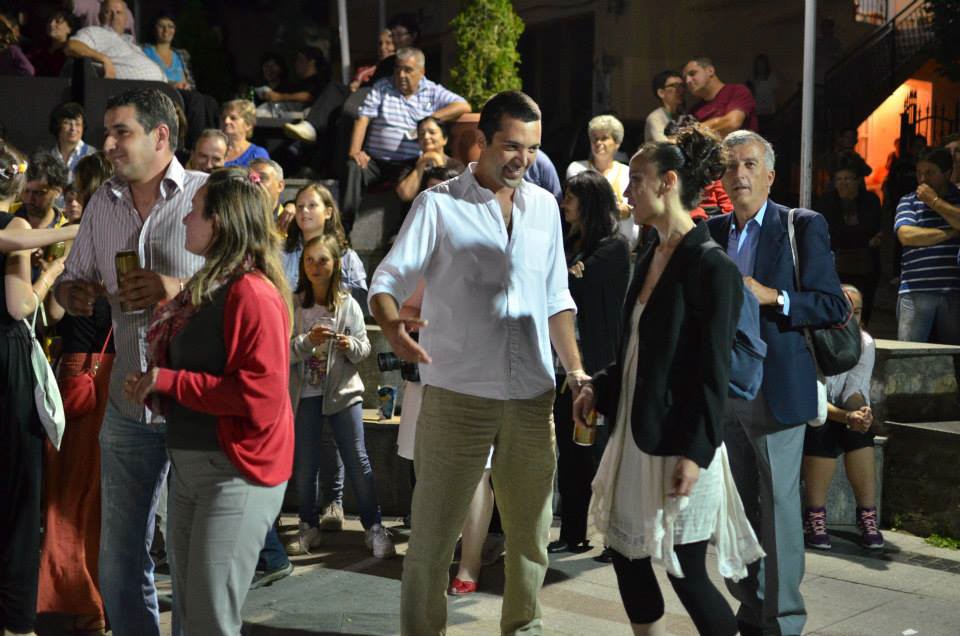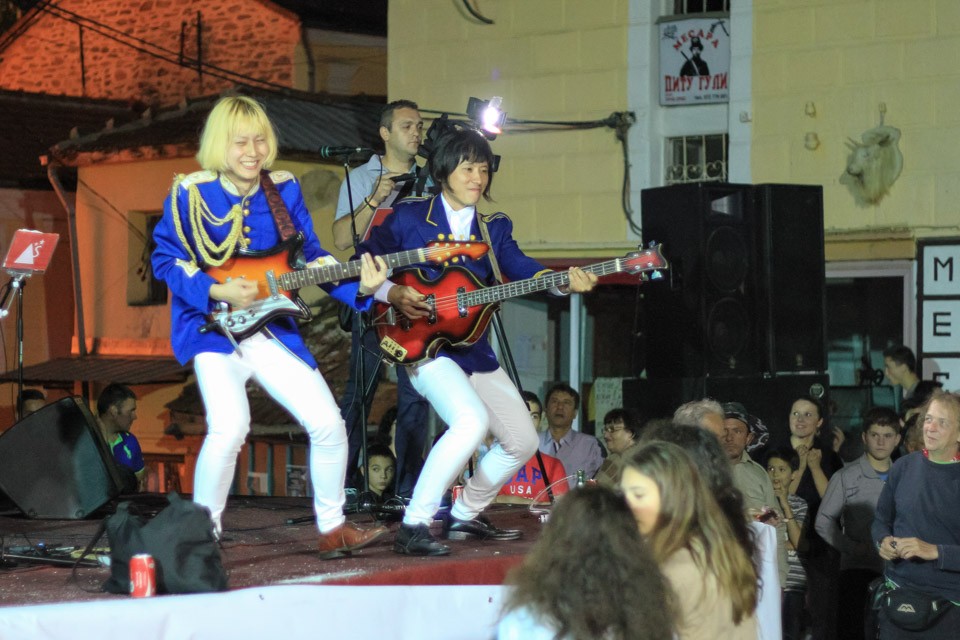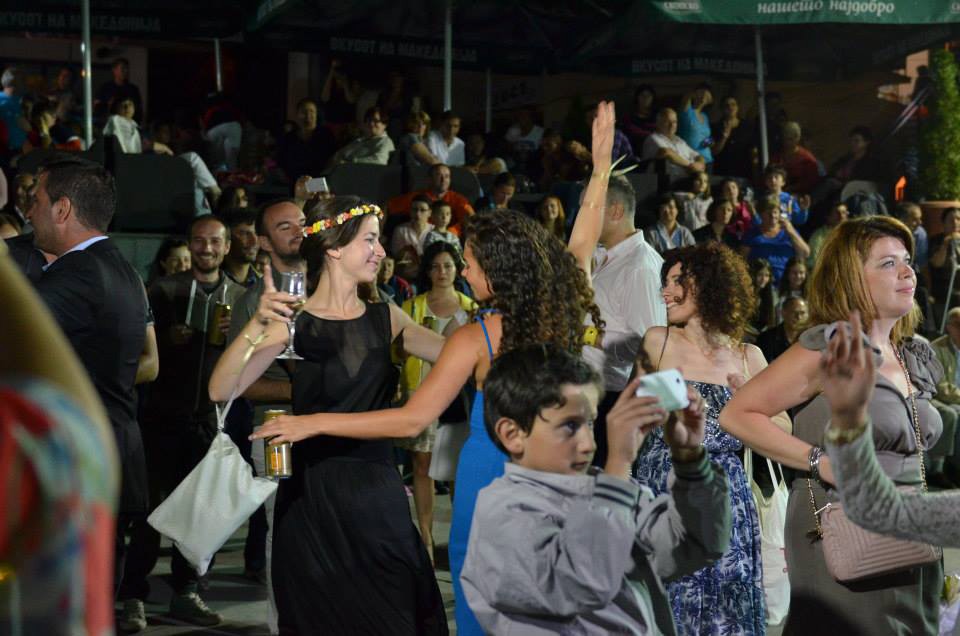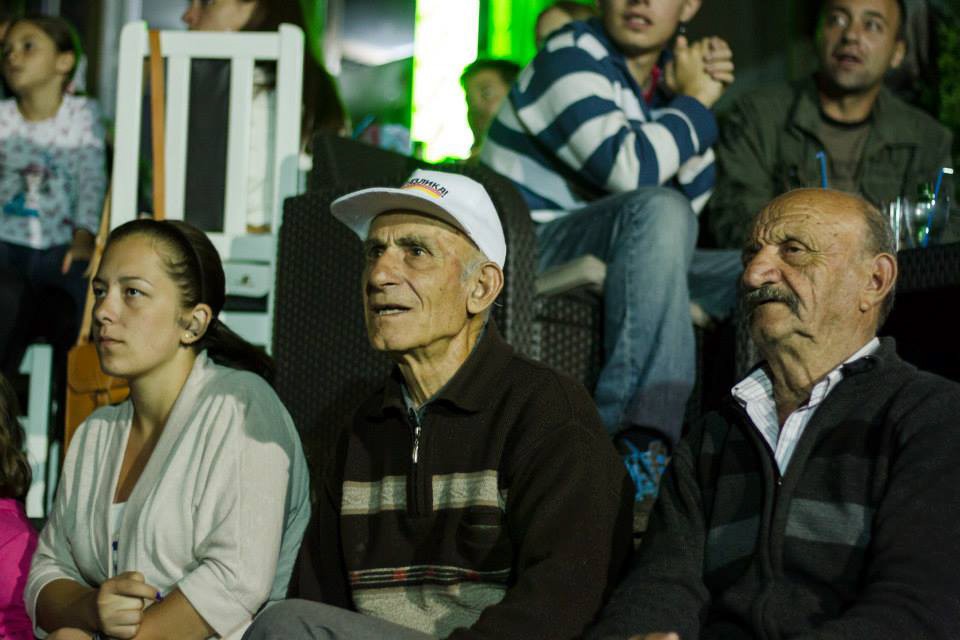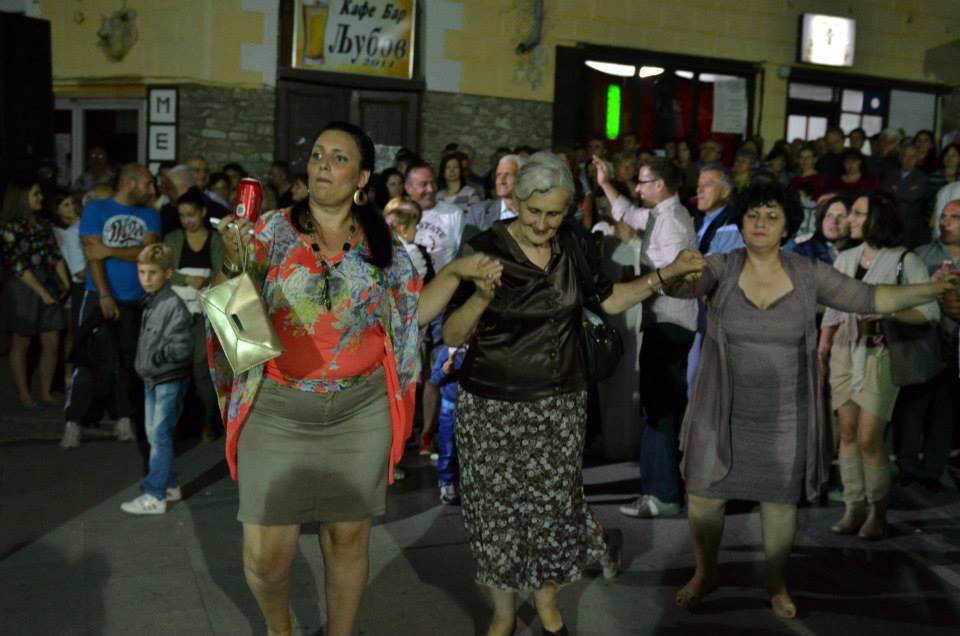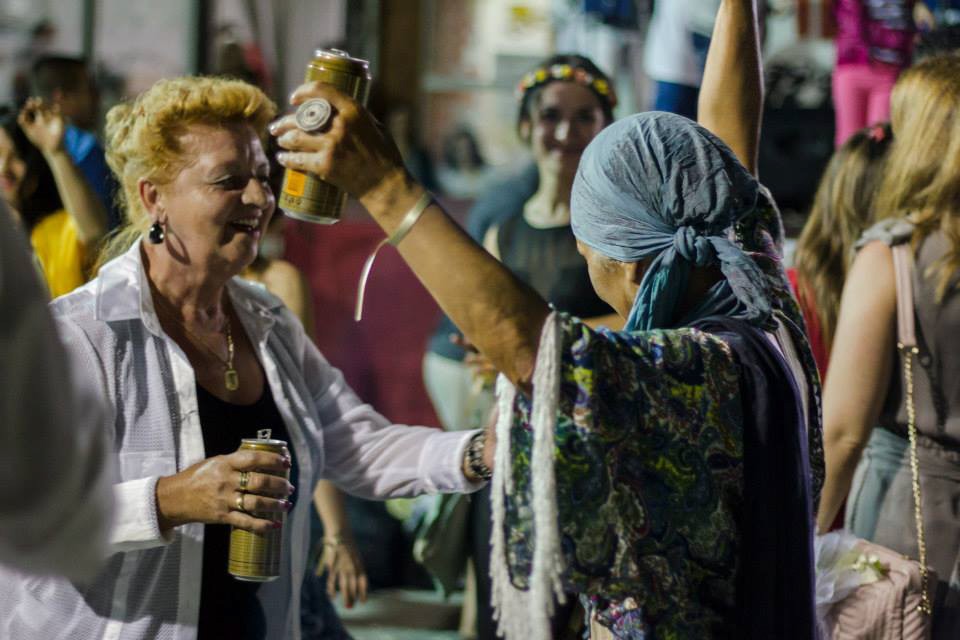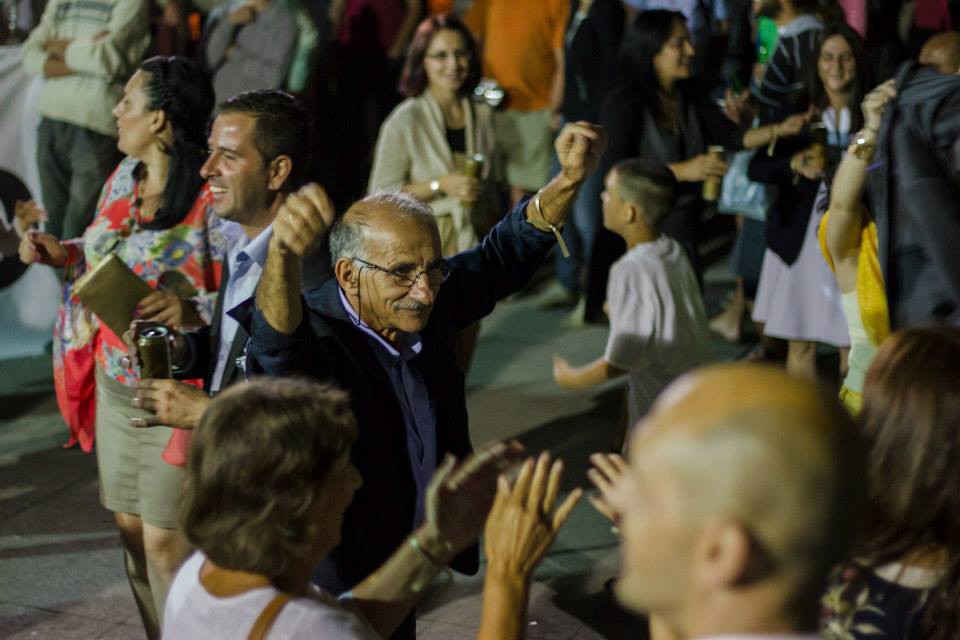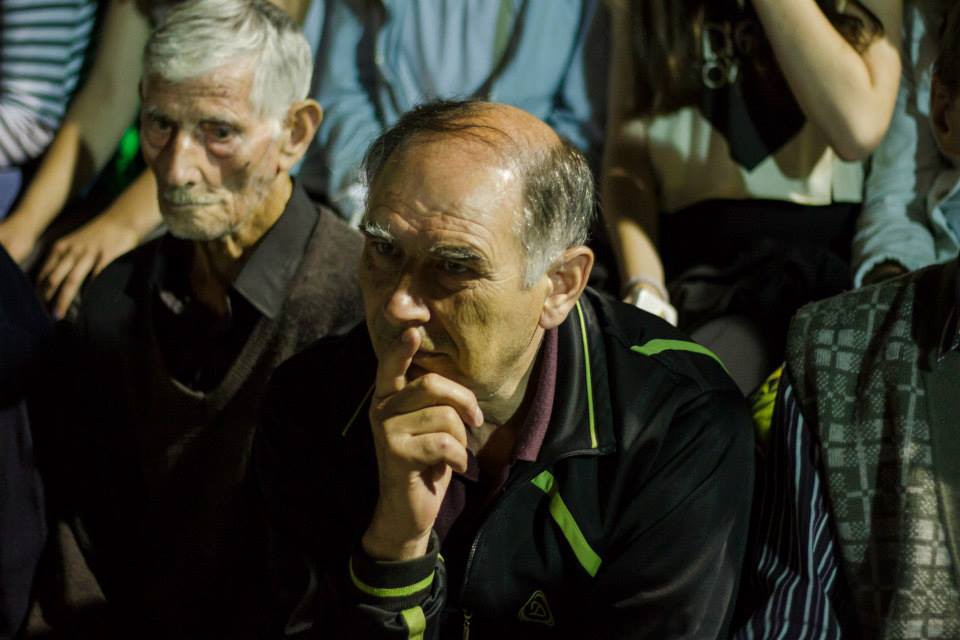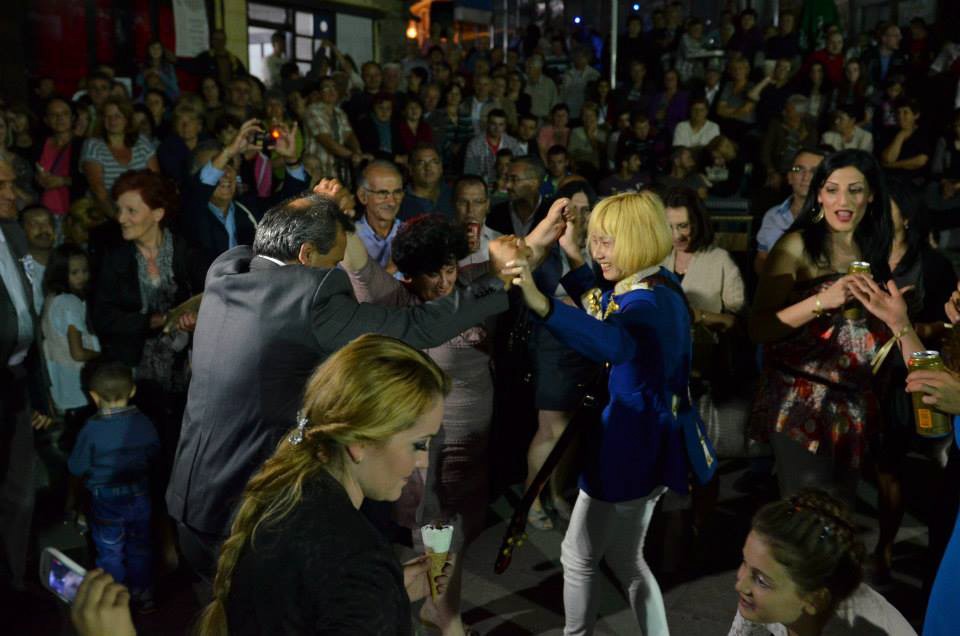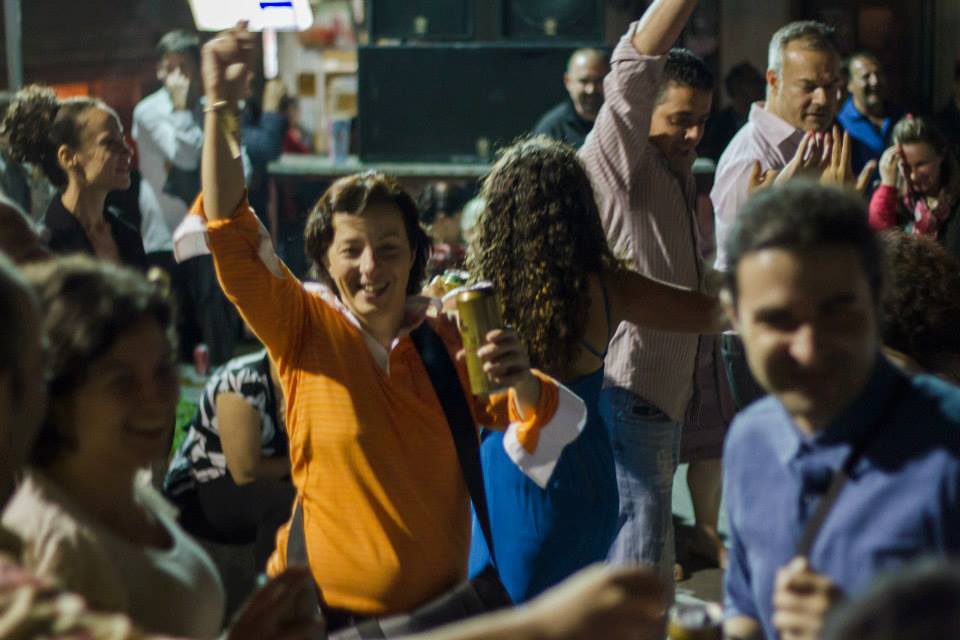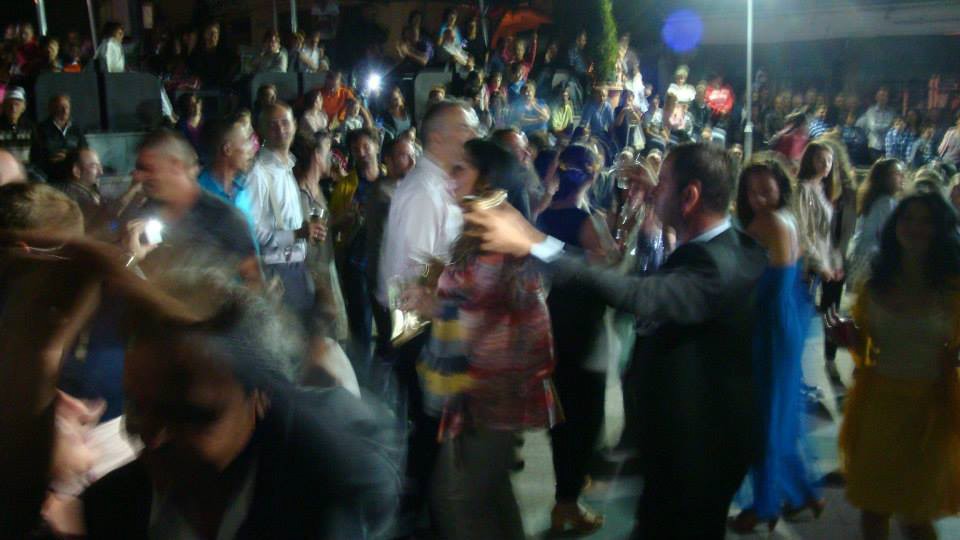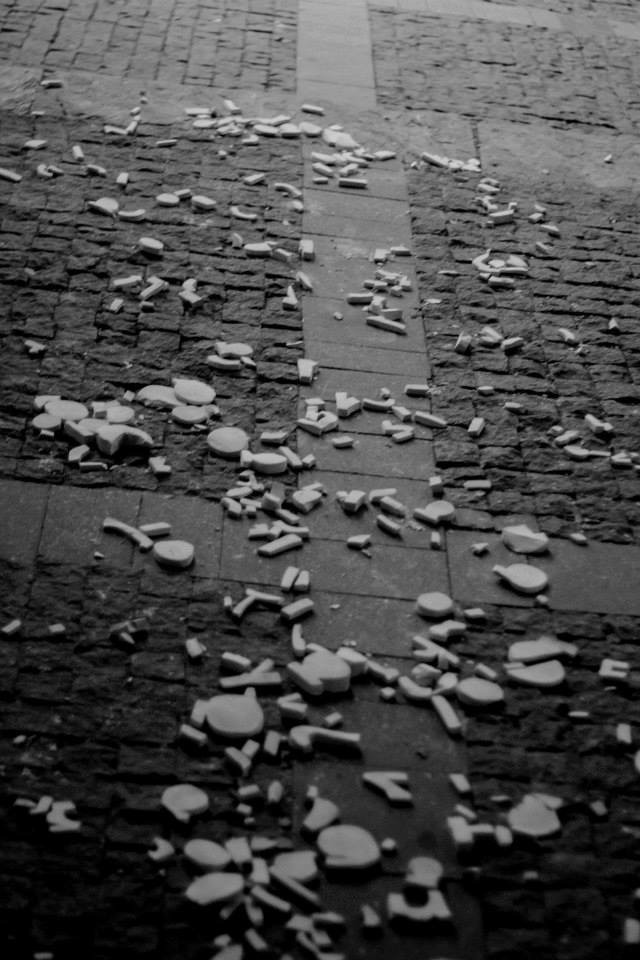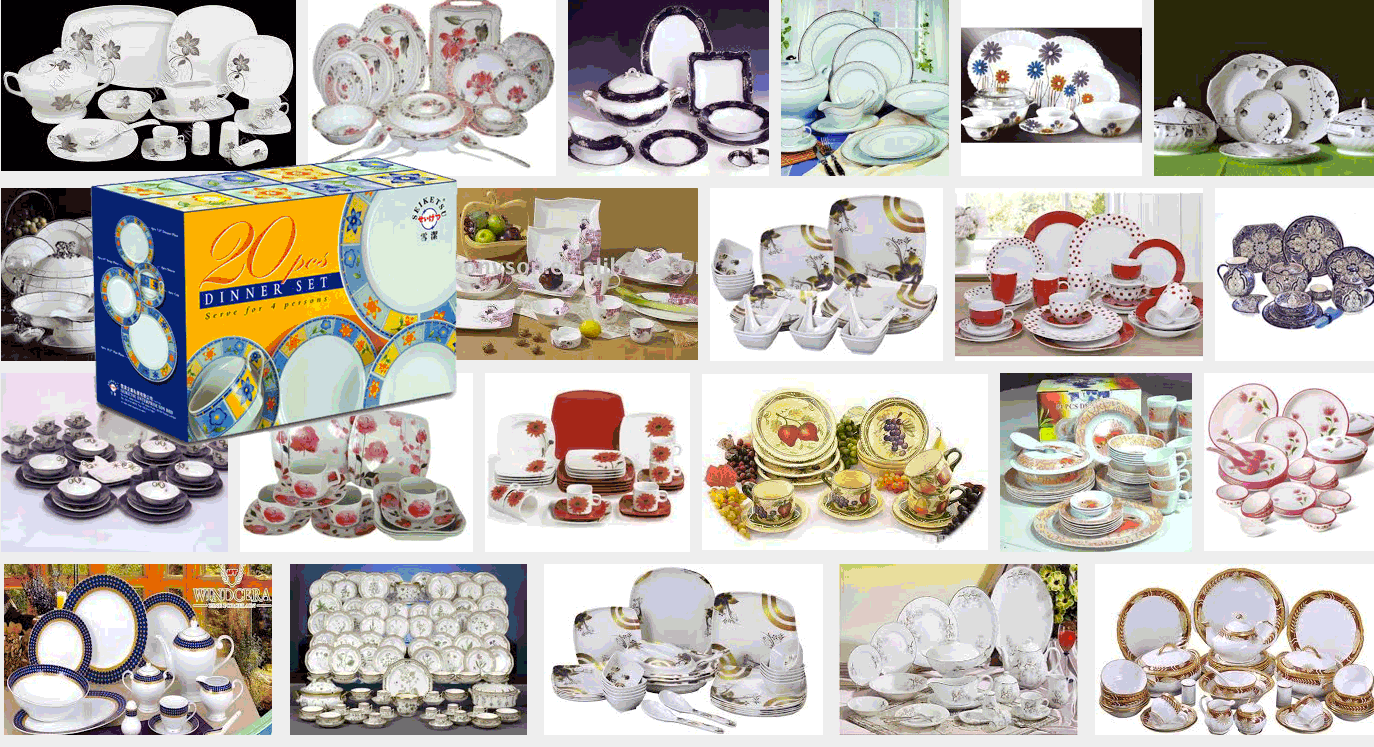
Momu & No Es,
Momu & No Es
Renkonto is the Esperanto word for an encounter. It is the title of an art project initiated by Fotini Gouseti and actively supported by her partner, non-artist Oliver Bozinovski. Renkonto functioned as a temporary, positive, and joyful meeting point — a happy encounter with actual people from neighboring countries who happen to have intense diplomatic relation.
In order to make this shared space manifest, a wedding celebration was created to orientate the projects claim. The event was materialized in Krusevo, was made in three parts, and lasted three days. In cooperation with Obsessive Possessive Aggression (O.P.A), an initial meeting made up of artists from both countries took place. An open party in the center of Krusevo concluded the whole event.
1. The wedding, as both a personal moment and a socio-cultural gesture, carries a broad historical symbolism for bringing together individuals, families, societies and contexts. The ceremonial tradition contained within all elements of weddings, creates social and cultural responsibilities for not only the couple, but also families and friends. That is to say, it is assumed that an agreement of social respect for the other is implied by marriage, as a union and a celebration made in public. The whole notion of the wedding is interpreted positively. To have a wedding, implies it will be handled by society positively as a precious moment. The wedding, in this particular case, turns out to be an artistic medium.
Renkonto is precisely not a performance, but is a public gesture extending beyond the event itself, supporting a sphere of human interaction located in celebration. Giorgio Agamben’s early book Infancy and History – The Destruction of Experience contains Notes on Gesture that is perhaps useful in understanding the artwork Renkonto as an ethical claim, supporting a particularly human form of interaction. Agamben assumes that:
Fotini Gouseti and Oliver Bozinovski decided to get married, requesting that Gouseti’s family cross the actual border as well as the issues this implies. The glorious religious ritual is the only support for the ethical claim of Renkonto, as the marriage has no legal recognition or registration. The wedding only exists, as such, within the familiar tradition of spiritual rites.
2. The second aspect of Renkonto was a three-day artists meeting bringing together similarities and differences from neighboring art scenes, opening a space for fruitful dialogue. This dialogue needed to occur in this way, as because of the existing conditions, both societies and their art scenes are mostly ignorant of each other.
3. The third and concluding part of Renkonto was an open party taking place in the main square of Krusevo. At this moment, invited artists, guests, and a large number of locals, came together in order to celebrate the union of Gouseti and Bozinovski. The Japanese gipsy band Pyramidos, was invited from Tokyo to perform music and songs from both countries. The audience experienced native sounds from a band displaced from their culture.
Renkonto challenges the boundaries between art and real life, using the personal union to challenge the negative connotations implied in relations between neighboring countries (who happen to have intense diplomatic tension). What happens when you personally meet the one that you have learned not to like?
Artists participating with their works: Maria Ikonomopoulou, Witta
Tjan, Momu & No Es, Chara Drandaki, Eden Mitsenmacher Tordjman
Artists participating in the artists meeting: Vladimir Janchevski,
Vassilis Noulas, Sofia Grigoriadou, Obsessive Possessive Aggression,
Kostas Tzimoulis, Ana Lazarevska, Ioanna Hatzipanigyri, Filip
Jovanovski, Fotini Gouseti.
Renkonto is a financially independent project with no institutional
affiliation. Different aspects of Renkonto have being generously
supported throughout in a variety of ways. Fotini Gouseti and Oliver
Bozinovski want to express their sincere gratitude to their families and
friends for their invaluable support; Alpha Domiki for supporting the
travel costs of Pyramidos’ from Japan; Orsalia Parthenis for the
donation of the wedding dress; Parthenis, the Municipality of Krusevo
for their kind permission to use the town square; the citizens of
Krusevo; to Padraig Robinson for editorial work; and most importantly
Rei Kakiuchi for the intellectual and organizational support.


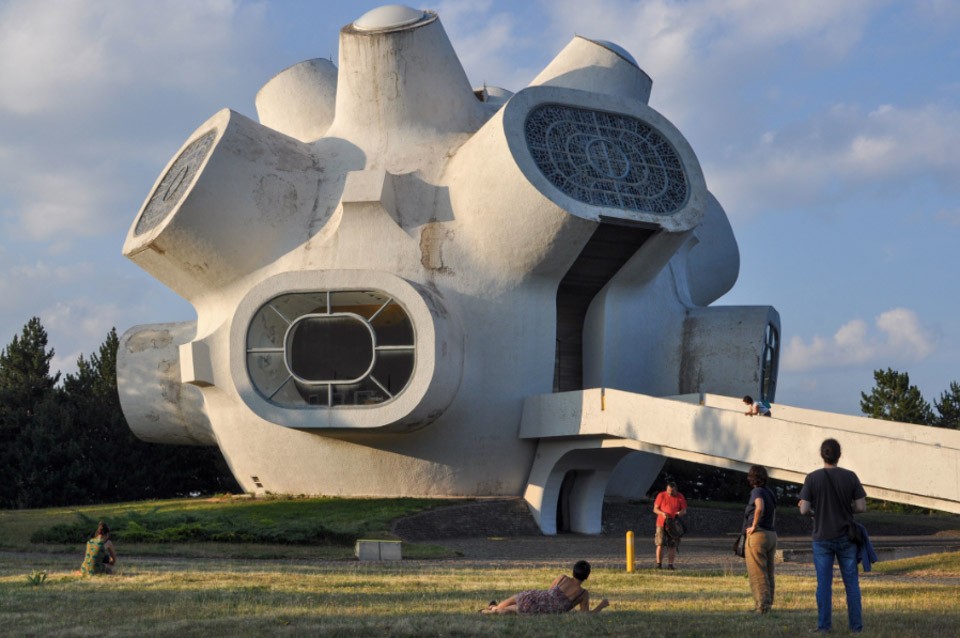

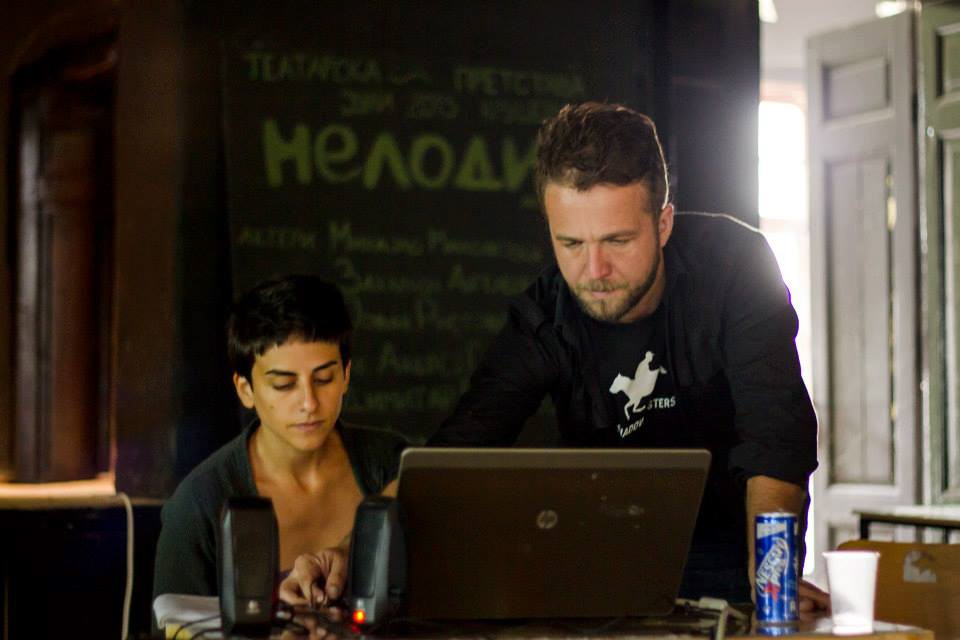
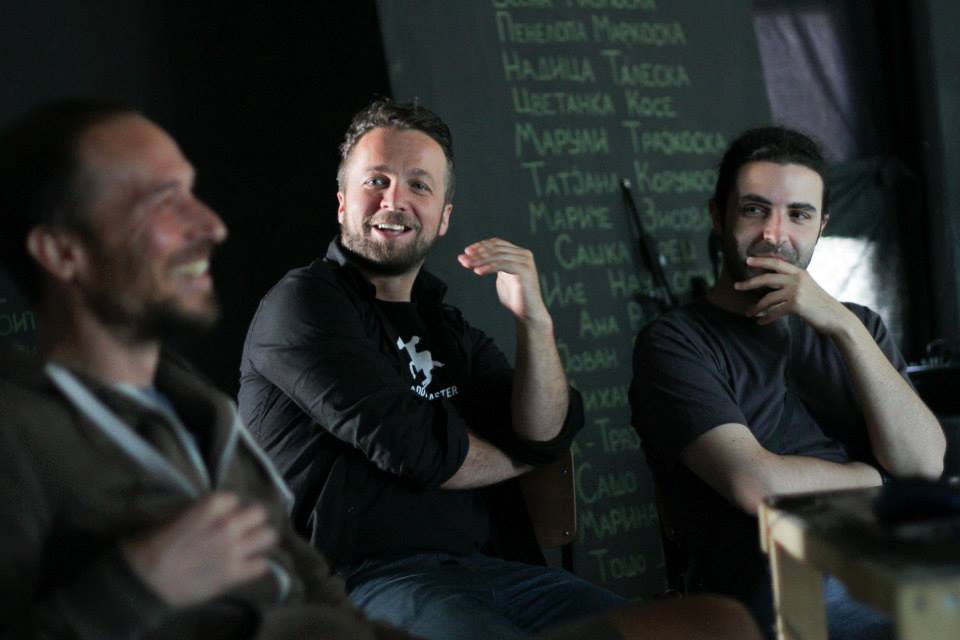

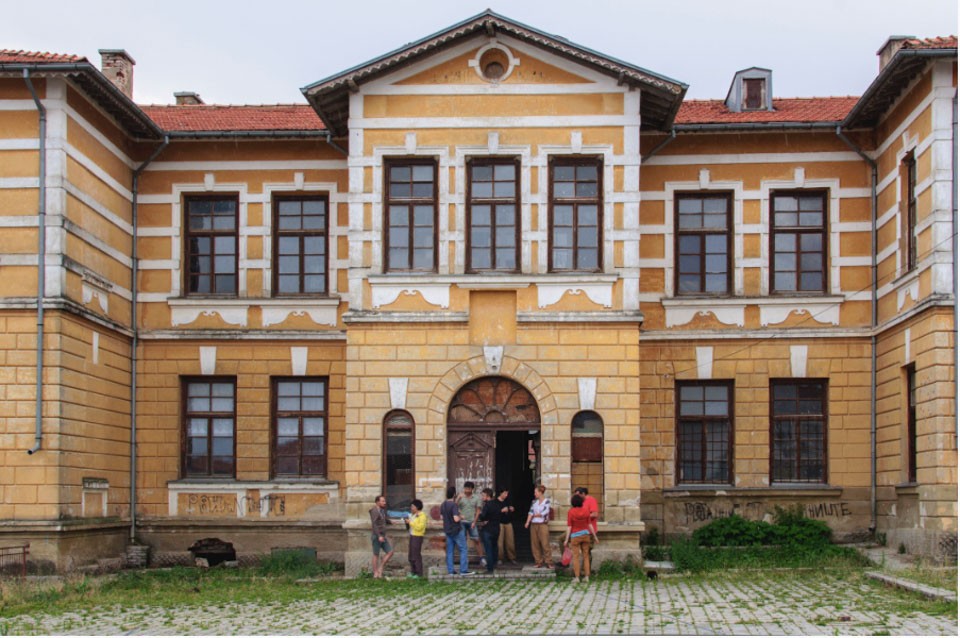
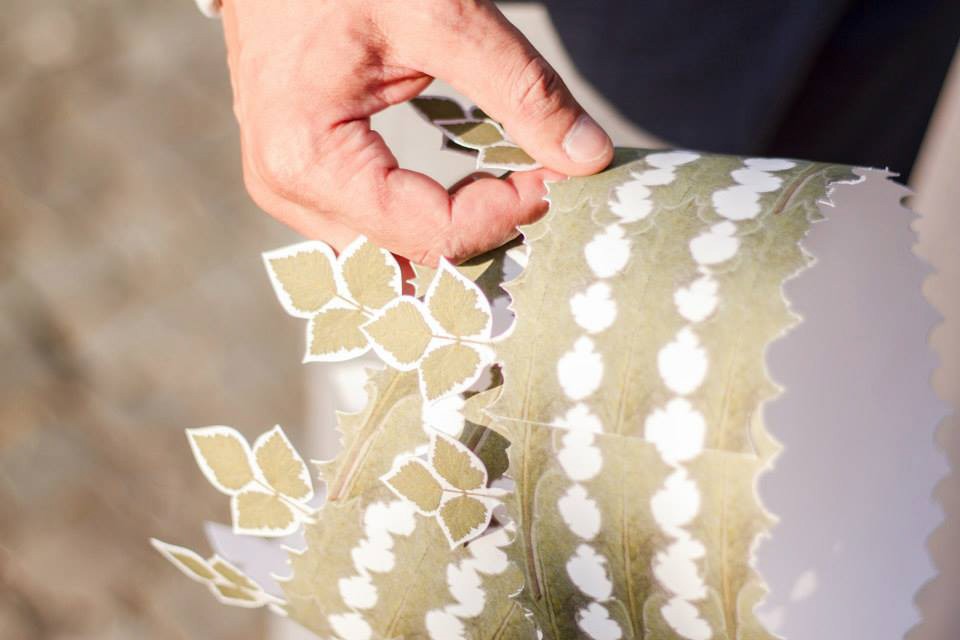
When I was asked to make the wedding crowns for Fotini and Oliver, I wanted to make a wreath with copies from Fotini’s herbarium. Since the marriage took place in Macedonia, where, following the tradition, the wedding crowns have the shape of crowns, I decided to use only one plant, chicory, the ‘king’ of wild plants in the Balkans. Men can easily find it in the mountains of both countries (Macedonia and Greece) and, as my mother told me, this plant can give you the healthy power you need.
Maria Ikonomopoulou
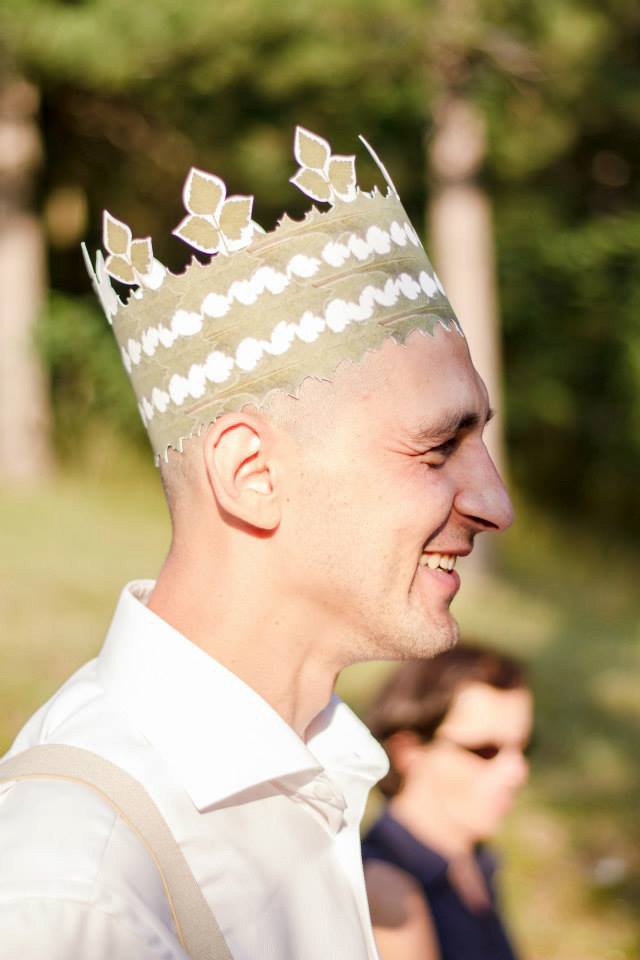

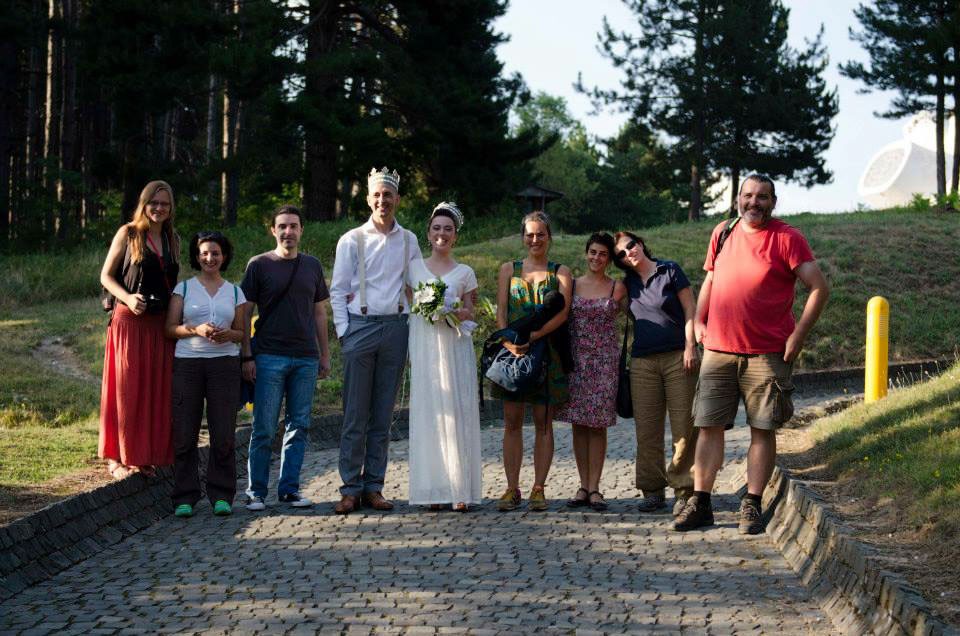
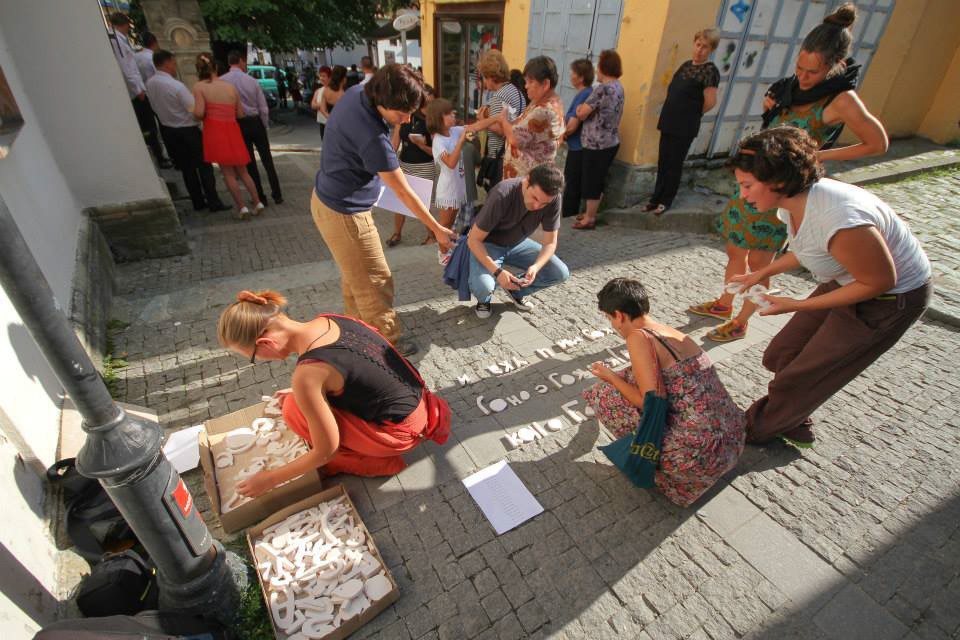
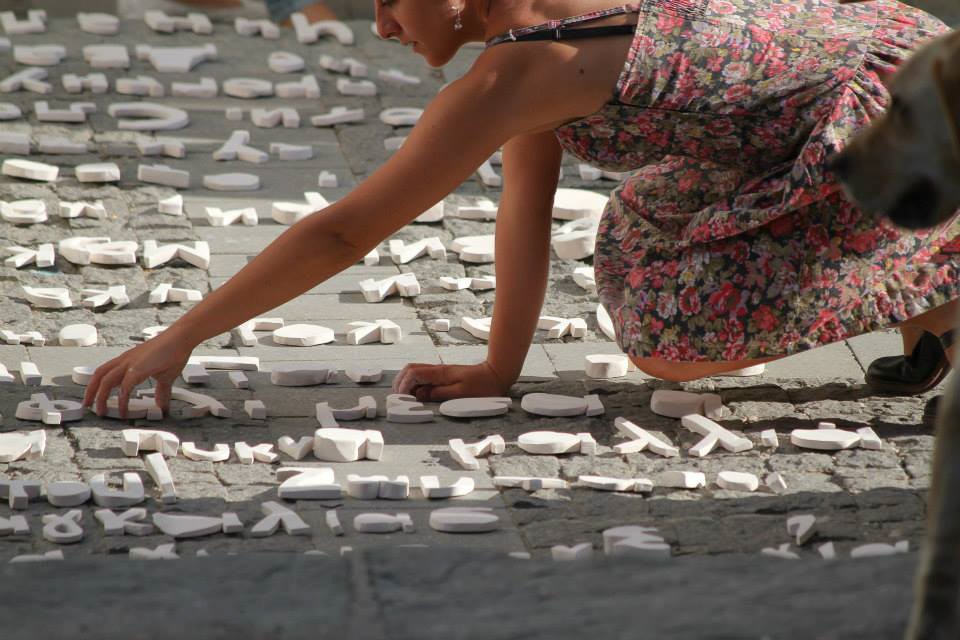
Concurrently, the work is destined to gradual transformation due to interaction with the passengers. There is no restriction in regard to walking on the piece which literally covers an urban passage. Visitors might move letters altering meanings or take some home. The 'annihilation' of the original text results to the appearance of traces of human activities. An imaginary spatial palimpsest occurs through the accumulation and synchronous existence of traces of crossings and actions realized in different past moments. The deconstruction of the text challenges the communicating purpose of language, visualising the fragility that characterizes the dialogue between the two regions: the signs that appear, without enabling decipherments, oscillate between the limits of legible and illegible. Cryptography is revealed as a key component of the work, giving rise to a cryptic alphabet, a galaxy of impenetrable signs and traces, revealing both the materiality of language and the opacity at its core (Gilman, 2011).

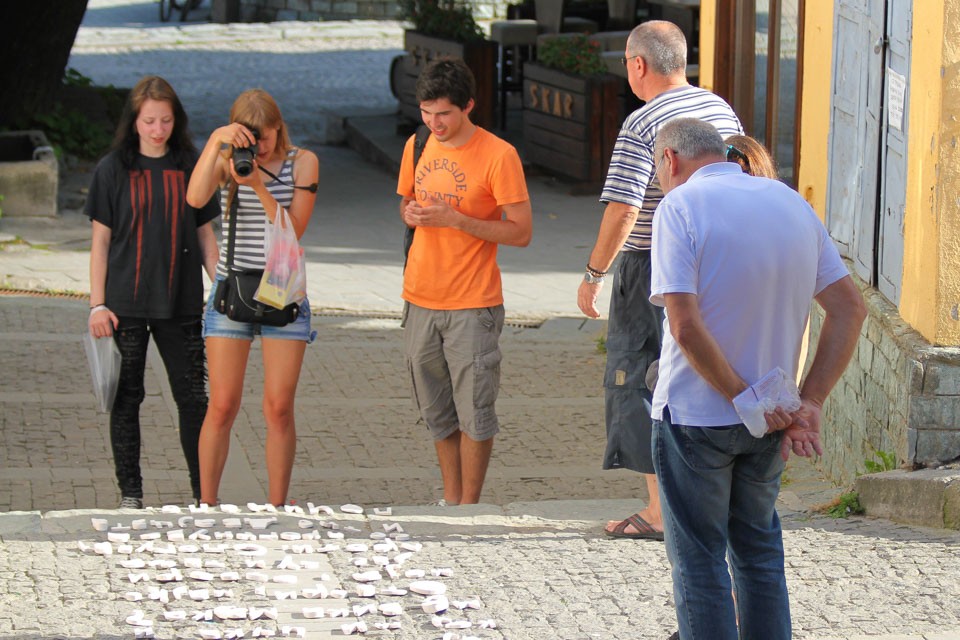
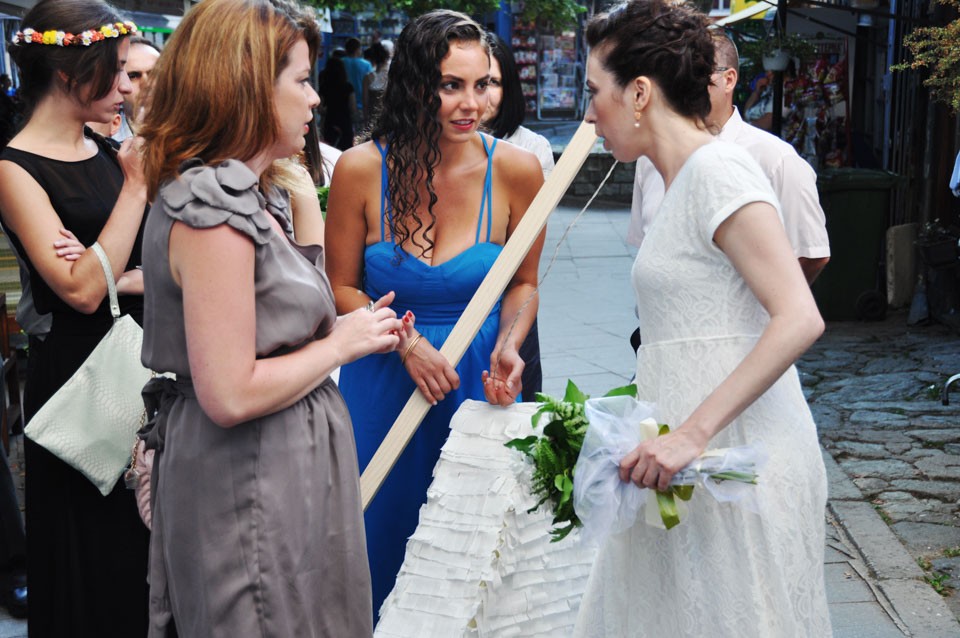
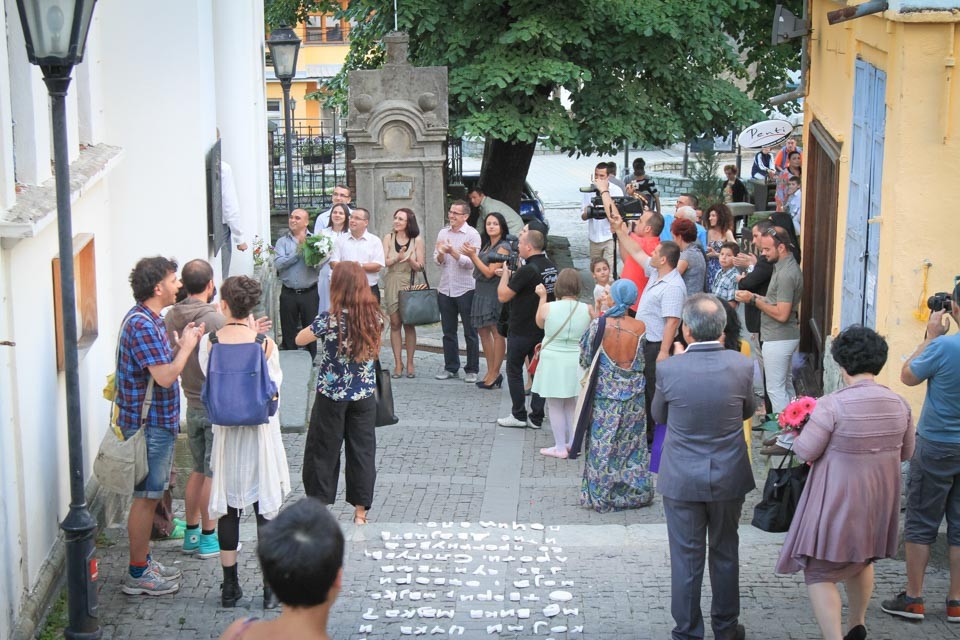
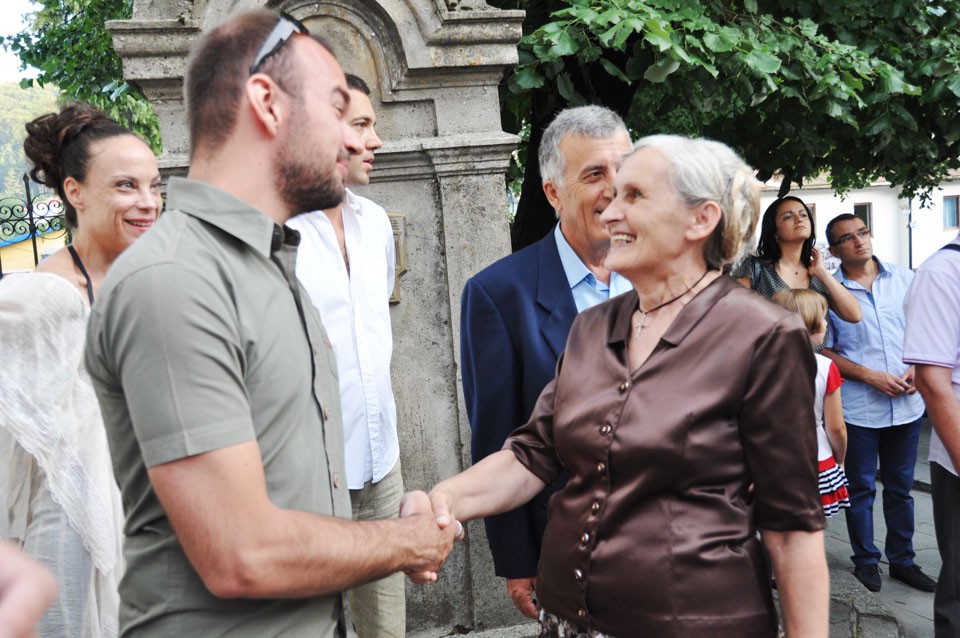
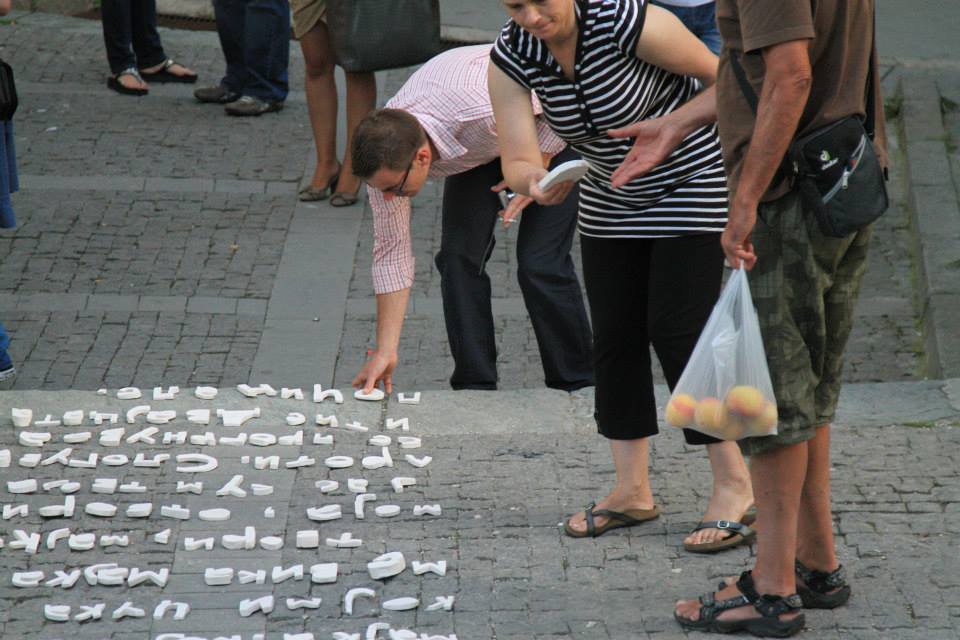
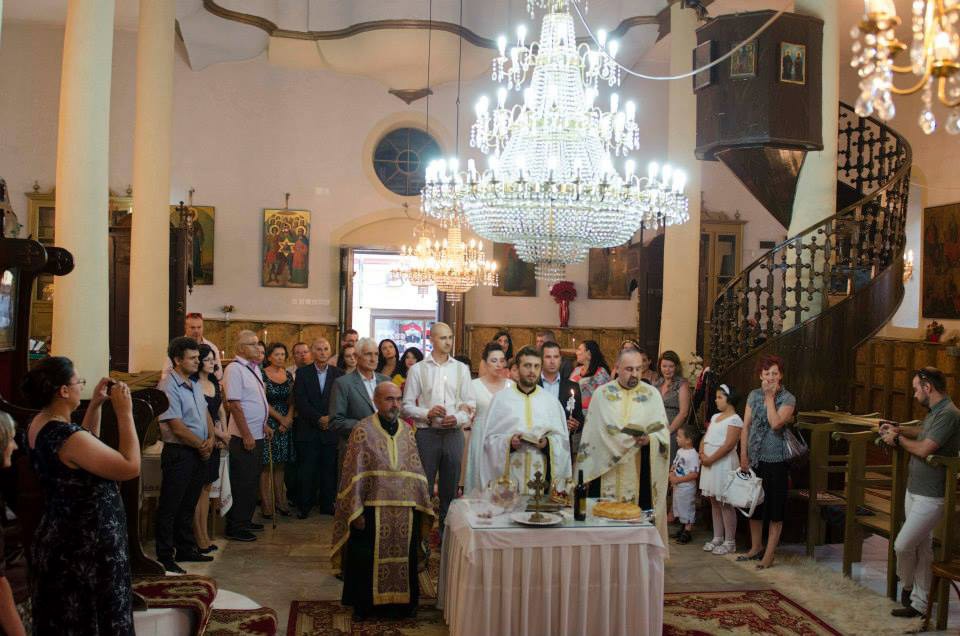

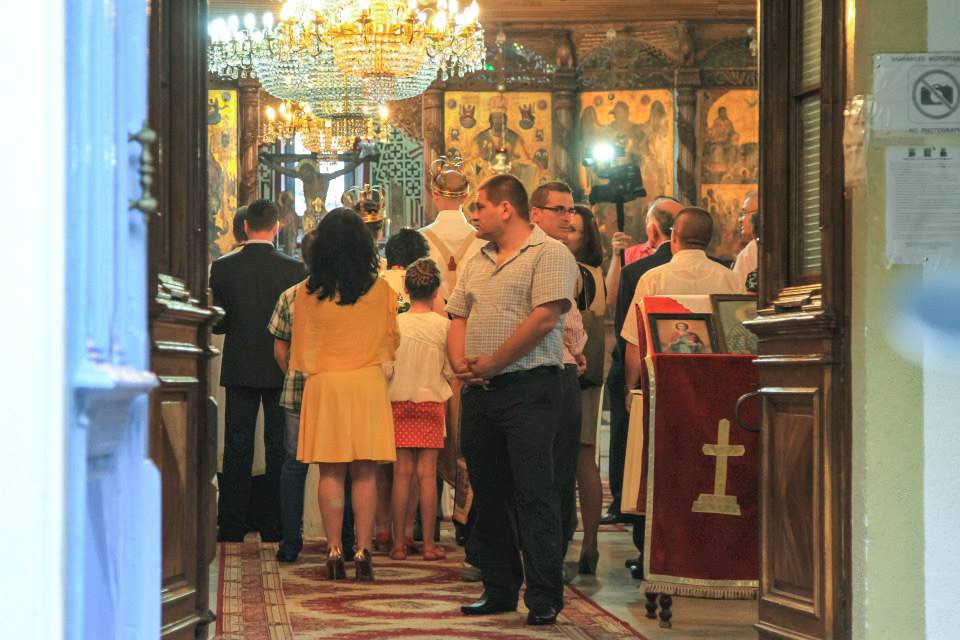

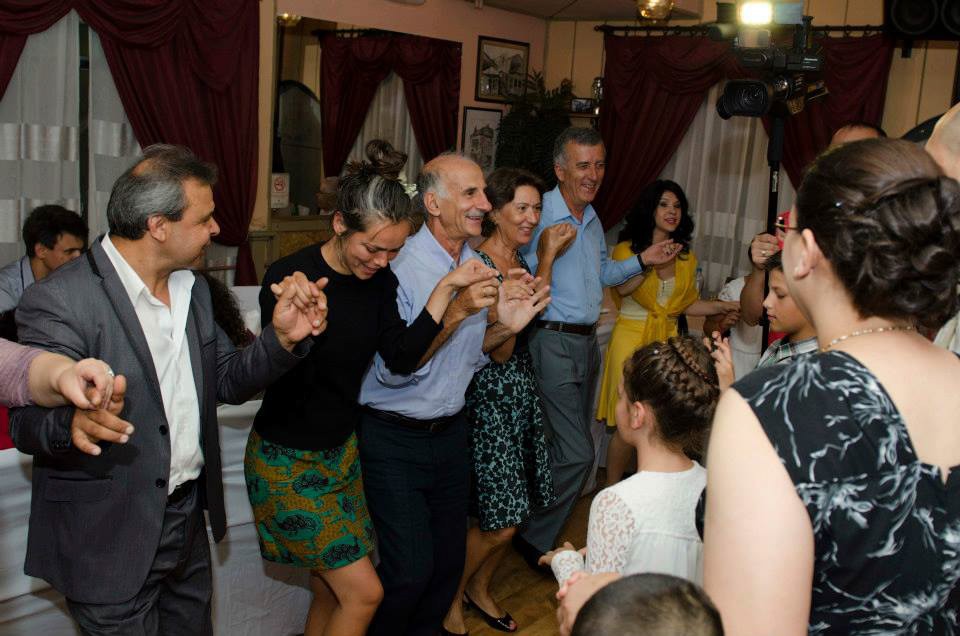
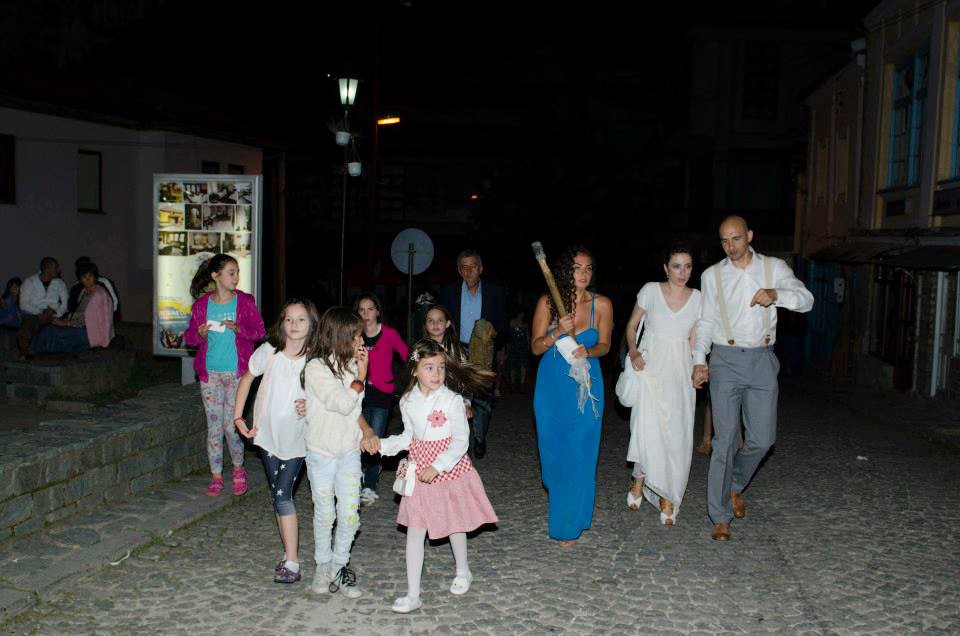

Fotini Gouseti
